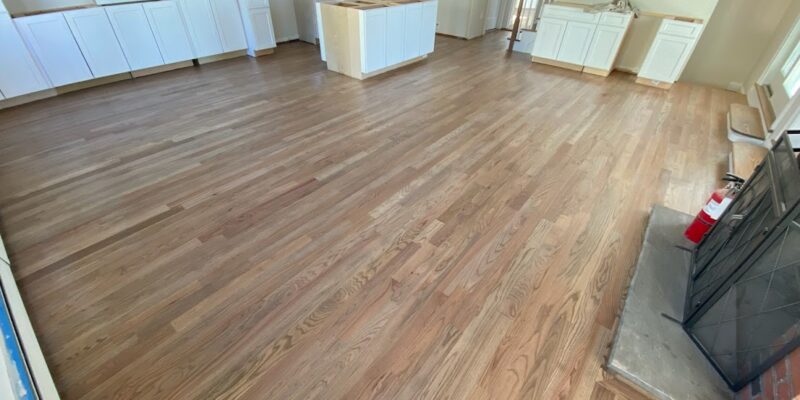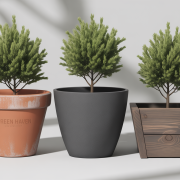When it comes to revitalizing the appearance of a worn-out or damaged floor, two common terms often come up: refinishing and restoration. While both processes aim to improve the condition of a floor, they involve distinct techniques and goals. In this article, we will explore the key differences between floor refinishing and restoration to help you better understand which option suits your needs.
Definition and Purpose
Floor Refinishing: Refinishing refers to the process of removing the top layer of finish from a floor, such as stains, scratches, or old coatings, and applying a new finish to restore its appearance and protect the underlying wood. The primary goal of refinishing, carried out by a professional wood floor refinisher, is to enhance the aesthetic appeal and extend the lifespan of the floor.
Floor Restoration: Restoration, on the other hand, involves more extensive repairs and reconstruction to bring a damaged or deteriorated floor back to its original condition. This process includes addressing structural issues, fixing gaps or loose boards, and repairing or replacing damaged sections. The primary purpose of restoration is to return the floor to its former glory, often maintaining its historical or architectural integrity.
Level of Intervention
Floor Refinishing: Refinishing is a less invasive process compared to restoration. It focuses on the surface level of the floor and primarily deals with cosmetic issues. Typically, the refinishing process involves sanding the floor to remove the existing finish, followed by applying a new stain or finish to give it a fresh look. This approach works well for floors that have minor surface damage, scratches, or wear.
Floor Restoration: Restoration requires a more comprehensive approach as it addresses both surface-level and structural issues. It involves assessing the overall condition of the floor, identifying underlying problems, and undertaking necessary repairs. Restoration may include tasks such as replacing damaged boards, filling gaps, reinforcing weak sections, or even reconstructing parts of the floor. This process is suitable for severely damaged or historically significant floors that require extensive repair work.
Time and Cost
Floor Refinishing: Refinishing is generally a quicker and more cost-effective option compared to restoration. Since it primarily focuses on the surface, it requires less time and effort. The process usually involves sanding, staining, and applying a new finish, which can be completed within a few days. The cost of refinishing primarily depends on factors such as the size of the floor, type of finish chosen, and any additional repairs required.
Floor Restoration: Restoration is a more time-consuming and expensive endeavor due to its comprehensive nature. The timeline for restoration varies depending on the extent of damage, the complexity of repairs, and the availability of historical materials, if applicable. The restoration process can take weeks or even months to complete. The cost is significantly higher than refinishing, as it involves not only surface treatments but also extensive repairs and structural enhancements.
End Result
Floor Refinishing: Refinishing aims to breathe new life into a floor’s appearance, making it look fresh, vibrant, and rejuvenated. By removing scratches, stains, and imperfections, refinishing can dramatically improve the overall aesthetics of the floor. It also adds a protective layer that enhances the floor’s durability, making it more resistant to future damage.
Floor Restoration: Restoration goes beyond cosmetic improvements and aims to bring back the floor’s original charm and character. The end result of restoration is a floor that closely resembles its original state, retaining its historical or architectural significance. Restoration efforts strive to maintain the authenticity and integrity of the floor while ensuring its structural stability and functionality.
Longevity
Floor Refinishing: Refinishing offers a significant improvement in the lifespan of a floor by protecting it from everyday wear and tear. The new finish acts as a barrier against scratches, stains, and UV damage, thereby extending the floor’s longevity. With proper maintenance and periodic refinishing as needed, a refinished floor can last for many years.
Floor Restoration: Restoration not only improves the aesthetics and functionality of a floor but also enhances its long-term durability. By addressing structural issues, replacing damaged sections, and reinforcing weak areas, restoration ensures that the floor remains stable and resilient for an extended period. Restored floors, especially those of historical or architectural significance, are often built to withstand the test of time, provided they receive proper care and maintenance.
Suitability for Different Scenarios
Floor Refinishing: Refinishing is an excellent choice for floors that have minor surface imperfections, light scratches, or wear and tear. It is commonly used for residential and commercial spaces where the primary concern is to revitalize the appearance of the floor. Refinishing works well on solid hardwood floors, engineered wood, and certain types of laminate flooring that can be sanded and refinished.
Floor Restoration: Restoration is necessary when the floor has significant damage, such as deep gouges, rotting wood, extensive water damage, or structural issues. It is often the preferred option for older or historic properties, where preserving the original flooring material and maintaining historical integrity is crucial. Restoration is typically carried out by skilled professionals who have experience working with various types of flooring materials and historical restoration techniques.
Professional Involvement
Floor Refinishing: While refinishing can be a DIY project for some homeowners, it is recommended to hire a professional floor refinishing service for the best results. Professionals have the expertise, equipment, and knowledge to ensure proper surface preparation, application of finishes, and achieving a smooth and even result. They can also guide you in choosing the right finish based on your floor type, desired look, and lifestyle factors.
Floor Restoration: Floor restoration is a complex process that often requires the expertise of experienced professionals. It involves not only surface treatments but also intricate repairs and structural adjustments. Skilled craftsmen who specialize in restoration work have the necessary skills to assess the floor’s condition, identify underlying issues, and execute the required repairs with precision. They can handle the challenges posed by historic flooring materials and ensure that the restoration work is carried out with care and attention to detail.
Summary
Floor refinishing and restoration are two distinct processes with different objectives and approaches. Refinishing focuses on surface-level improvements, aiming to enhance the appearance and durability of the floor, primarily dealing with scratches, stains, and wear. Restoration, on the other hand, involves comprehensive repairs and reconstructions, aiming to bring back the floor’s original condition and historical significance. The choice between refinishing and restoration depends on the condition of the floor, the extent of damage, desired outcomes, and budget considerations. Consulting with professionals in the flooring industry can help you make an informed decision and ensure that your floor receives the appropriate treatment it needs to regain its beauty and functionality.













Comments